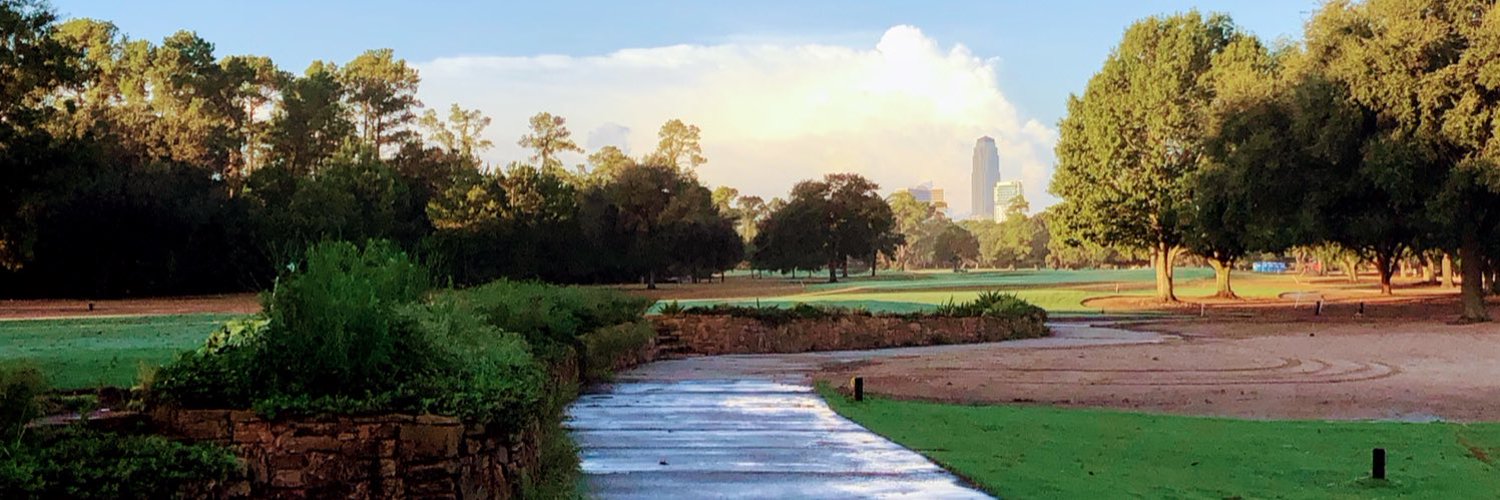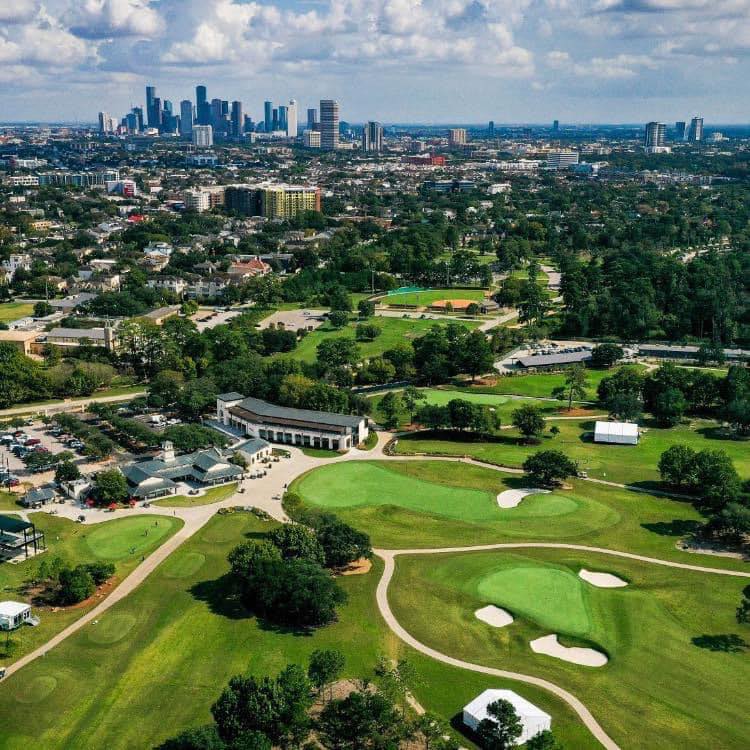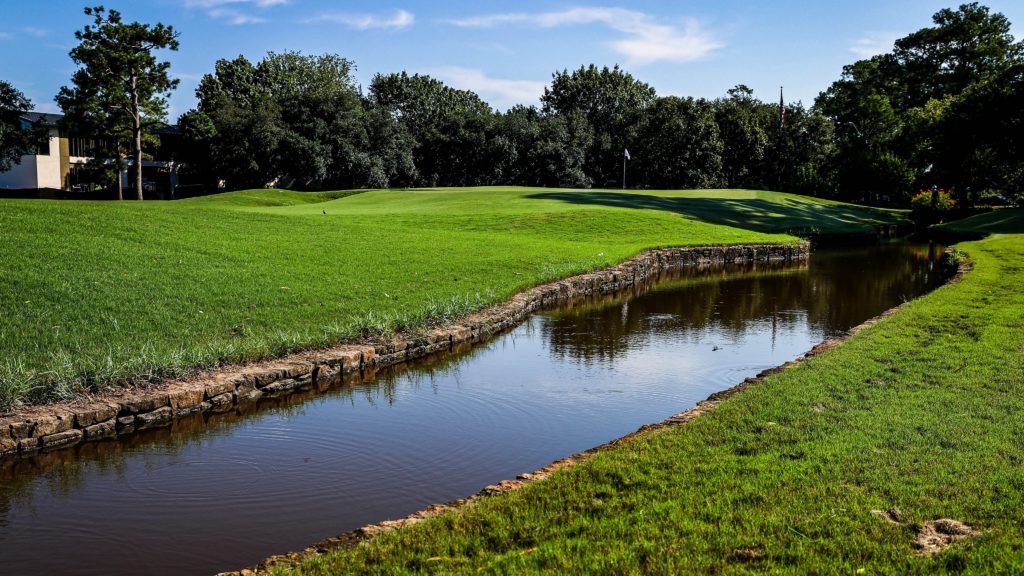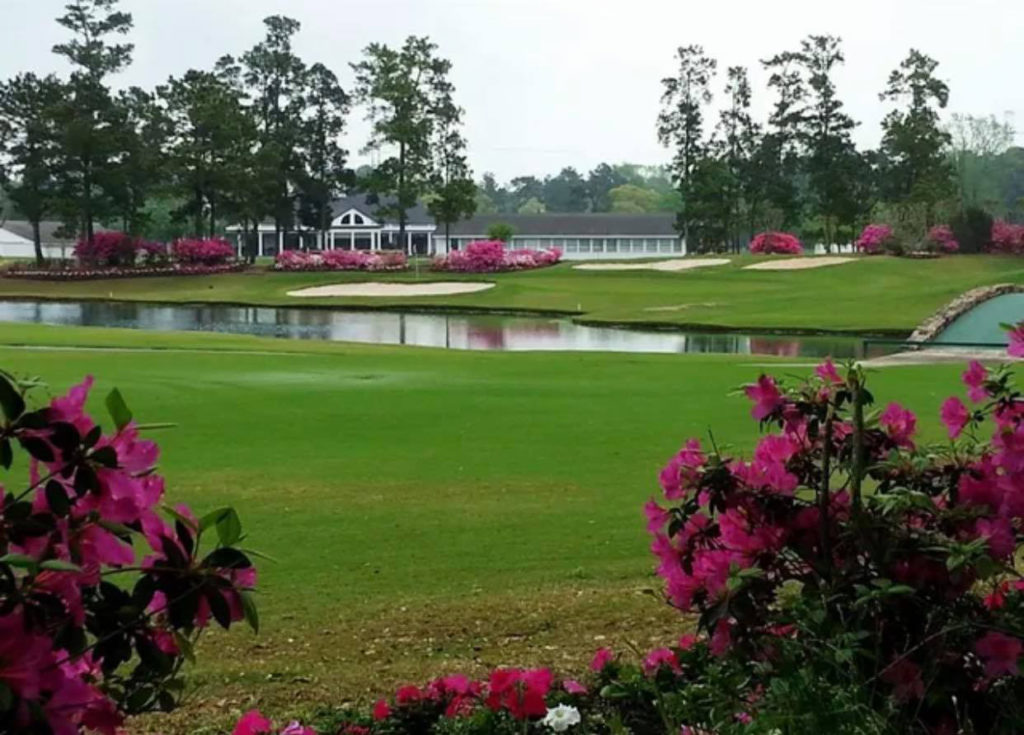
Memorial Park Golf Course in Houston carries a dual mantle – it’s one of the best facilities in the nation’s fourth largest city and good enough to be the host course for the Cadence Bank Houston Open on the PGA Tour’s Fall Series, which will be contested this year from Nov. 10-13. It is also one of the country’s busiest municipal golf courses, welcoming more than 60,000 rounds every year.
It’s been that way almost from the start at Memorial Park Golf Course, the centerpiece of a 600-acre city-owned greenspace inside Houston’s inner loop just a few miles west of downtown.
The course has always been a municipal jewel and the closest thing to a birthright for Houston-based golfers, but has become even more so since much ballyhooed renovation three years ago by golf architect Tom Doak that assures that Memorial Park Golf Course will be able to continue to serve its players when it’s not showing off for the professional golf set.
Playing to nearly 7,300 yards and as a par-70 for the Cadence Houston Open, the course is highlighted by a drumbeat of tough par-4s. The first look at the scorecard suggests that it would be a bomber’s paradise, but it actually demands an even hand as well as precision, care and patience.

Memorial Park Golf Course
A history that grew with Texas
Memorial Park Golf Course began as a nine-hole track with sand greens, built in 1912 near the hospital at Camp Logan for use by convalescent soldiers. In 1935, following the closing of the hospital, golf course architect John Bredemus, perhaps more famous for fashioning Colonial Country Club in Fort Worth, redesigned the course and added a second nine.
The course hosted the Houston Open in 1947 and then again from 1951 through 1963. Winners of the tournament while it was held at Memorial Park included major champions Arnold Palmer, Bobby Locke, Jack Burke Jr., Bob Charles, Bobby Nichols and Jay Hebert, and Jimmy Demaret and Dave Marr are among the players who got their start at Memorial Park.
Carlton Gipson did a renovation of the course in the mid-1990s, but once Doak (along with assistance from then-PGA Tour player Brooks Koepka) got his hands on it, Memorial Park Golf Course became worthy of hosting the Tour again.
Addition by subtraction at Memorial Park
Memorial Park Golf Course used to have 54 bunkers. Now it has 19. Removing bunkers had reduced maintenance and makes it easier to get golfers back on the course after heavy rain, something that the Bayou City is often hit with.
Instead of bunkers, many of the greens are flanked by steep, tightly mown grassy areas, and they repel shots. If the course is set up with its hole locations close to the edges, players are chipping off tight lies to elevated putting surfaces.
The overall look of the golf course is more open than before the renovation as much of the underbrush has been cleaned up and some trees have been moved or removed to give the course even more of a parkland feel. It’s also now more of a second shot course, with the highly undulated greens making it more difficult to get realistic birdie putts if the putting surface is hit in the wrong sector.
Three par-3s on the course will play at more than 200 yards for the tournament. The back nine dares players to take chances. The final six holes include two potentially drivable par-4s, a par-5, a short par-3 and a brutal finishing hole.
That stretch starts with the 13th, which, despite not having any bunkers or water, Doak said is one of the toughest drivable par-4s he’s played. It’s 406 yards from the back but can be set up to allow the players to have a go at it in one shot. The narrow “L”-shaped green is guarded by steep slopes on all sides.
No. 14 is a brutal par-4 and arguably the toughest hole on the course at 529 yards (!); it features prominent oak trees that are throughout Memorial Park.
The 15th hole is a 155-yard par-3 with a thin, angled green fronted by a steep bank that leads into a creek. The hole is surrounded by fans and considered “the loudest hole in Texas.”
The next two holes – the par-5 16th and the par-4 17th – offer eagle opportunities but also feature peninsular greens that jut out into water. No. 16 is a risk-reward three-shotter that demands a bold tee shot and nerveless approach to get home in two. It’s also one of the only holes where a hazard is in play if driver is used off the tee.
The 17th is 382 yards but has a forward tee that makes it drivable. The green is surrounded on three sides by the lake. The 16th and 17th greens are located across the water from each other, allowing fans to watch dramatic shots from a single spot.
The finishing hole is a par-4 carded at 503 yards with a massive hump in the middle of the fairway. The three greenside bunkers are the most of any hole on the course.
Many of the pros consider Memorial Park Golf Course a course “of misses,” meaning players can hit it great and have a couple misses in the wrong spots and make easy doubles. That was the goal of the Doak and Koepka with their renovation – make it a course that creates excitement and showcases variety.
Memorial Park Golf Course’s green complexes and tour-level conditioning make it once a must-play in the state while in the Houston area. Local players can tee it up for under $50 walking — now that’s a bargain.

Memorial Park Golf Course
Other golf options in the Houston area
Houston and its surrounding communities are rife with great public golf and resort options, as would be expected by a city so large and with such a temperate climate. For our recommendations below, we focus on some of the daily-fee options.
Cypresswood Golf Club, Spring
Located in north Houston near George Bush Intercontinental Airport, Cypresswood helped start the trend toward high-quality, daily-fee golf clubs in the area. It sits on more than 800 acres of rolling, heavily wooded terrain alongside the confluence of Spring and Cypress creeks. With the original Cypress Course (designed by Rick Forester) and the much-ballyhooed Keith Foster-fashioned Tradition, Cypresswood boasts two unique golf experiences and fine year-round playing conditions.
Opened in 1988 as Cypresswood’s original course, Cypress caters to shot-makers on a routing that possesses doglegs and rolling fairways among the tall pines and hardwoods lining the 6,906-yard, par-72 track. Tradition followed in 1997 and is 7,220 yards of lush, green fairways, enormous bunkers, ravines, creeks, ponds, tall pines, live oaks and magnolia trees. The big-shouldered, old-style layout challenges golfers to be accurate or suffer the consequences.
Timber Creek Golf Club, Friendswood
Designed by Jay Riviere, Timber Creek opened in 2001 and rambles across 316 acres that remind golfers of the rolling hills and woodlands of South Carolina. Its three excellent nine-hole sides — Creekside, Timber Trails and Pines — were carved out of oak and pine forests. More than a million cubic yards of dirt were brought into the site and several rock outcroppings visible during the round will make a golfer swear he is anywhere but southeast Texas.
Riviere’s work offers a dash of various design elements, and the golfer can bite off as much as he or she can chew thanks to four tee boxes. A creek winds through the property, requiring 13 bridges to traverse the site and giving a clue to the aqueous hazards on tap.
Meadowbrook Farms Golf Club, Katy
This Greg Norman-designed course is nestled about 35 minutes from Houston’s downtown among hardwood trees, creeks, lakes and wetlands. The layout is framed by native prairie grasses and wildflowers, all of which promote a heady shot strategy. Here, the player will find stacked-sod bunkers, subtle breaks in the greens and a few forced carries. The putting surfaces are kept hard and fast, and run-up shots are preferred, especially if the wind is blowing.
Built on property that once was a rice farm, Meadowbrook Farms runs through trees and along a creek on several holes, then pops the player back out onto open prairie. Some fairways are narrow and are flat to gently rolling; each hole includes something that can cause a problem for the inaccurate.
Augusta Pines Golf Club, Spring
With a routing that winds through, around and beside mature pines, dogwoods and oaks, Augusta Pines gives golfers a little piece of Georgia. Its holes are rumored to mirror some of those at Augusta National and Augusta Pines stretches 7,041 yards through a neighborhood of impressive homes. The setting is highlighted by more than 30 acres of lakes and creeks, which come into play on 11 of 18 holes. Players try to compare what they just tackled with the holes they see every April while watching The Masters.
The round is punctuated by the final two holes, both of which are played to island greens. First, be precise with your iron at the 149-yard, par-3 17th, where the surrounding water leaves no room for error or weak-heartedness. The par-5 closer extends 522 yards, and its fairway is narrowed by a lake along the right and trees and a bunker in the primary landing area. The putting surface, which seems as if it’s floating in water, is further guarded on three sides by sand.
Tour 18, Humble
Born out of a lot of notoriety and pushed forward by lawsuits that actually created attention for its product of replica holes, Houston’s Tour 18 — the original copycat course — shows that memories can still be made playing simulations of “America’s Greatest Eighteen Holes.”
Tour 18 features dead-on copies of holes from Augusta National, Bay Hill, Pinehurst, Harbour Town, Inverness, Pebble Beach, Shinnecock Hills and Doral, among others. The course has its own version of “Amen Corner” — holes 11, 12 and 13 from the home of the Masters, a replica of Doral’s Blue Monster and even the daunting island-green par-3 17th at TPC Sawgrass.
Golfers get the chance in one round to also play simulations of Oakmont’s famed third hole (complete with church-pew bunkers), Bay Hill‘s sixth, which curves around a huge lake, and the par-3 sixth at the Disney Magnolia course, where a bunker shaped like the head of Mickey Mouse awaits shots short of the putting surface.

Tour 18 Houston

